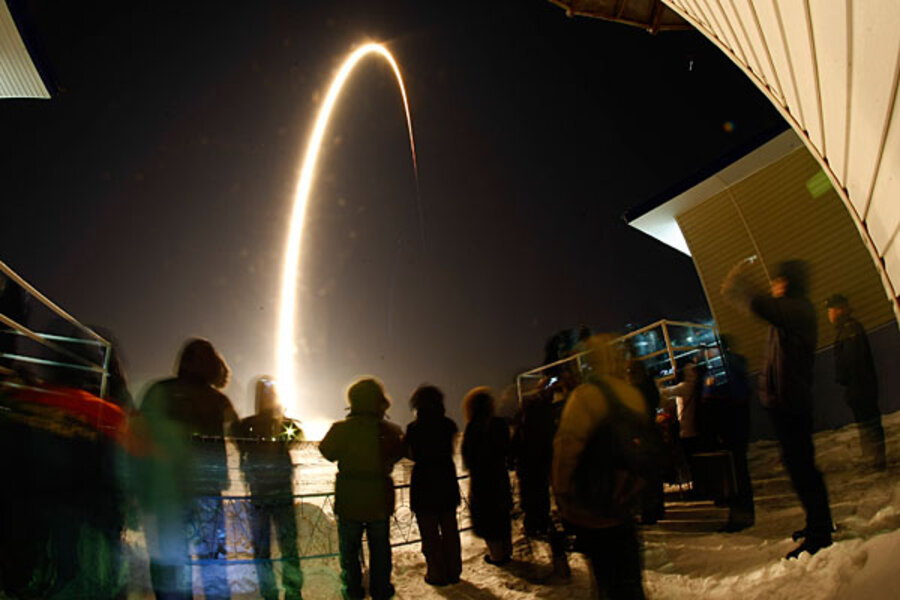So a Russian, an American, and a Dutchman blast off in a rocket...
Loading...
A trio of astronauts blasted off aboard a Russian Soyuz rocket on Wednesday on a mission to bring the International Space Station back up to full manpower after an August cargo launch accident disrupted flights.
The rocket carrying Russian cosmonaut Oleg Kononenko, NASA astronaut Don Pettit and the European Space Agency's Andre Kuipers lifted off at 8:16 a.m. EST under freezing conditions at the Baikonur Cosmodrome in Kazakhstan, a NASA Television broadcast showed.
The all-veteran crew was scheduled to reach the orbital outpost at 10:22 a.m. EST on Friday. They will join station commander Dan Burbank and two Russian cosmonauts who arrived last month, bringing the complex back to its full live-aboard staff of six.
Soyuz flights to the station were disrupted by the failure of a Russian Progress cargo ship in August. The Progress' upper-stage engine is virtually identical to the one used to fly crews to the station, prompting a suspension of flights until the cause of the accident could be found and fixed.
Russian engineers traced the problem to contamination in a fuel line, which prevented the rocket engine from firing. The capsule broke apart as it fell back through the atmosphere, scattering debris over parts of Siberia.
After detailed inspections and new procedures to tighten quality control, Russia resumed station cargo flights on October 30 and crew transports on November 14.
In addition to ramping up science experiments aboard the station, the astronauts and cosmonauts are expected to oversee the start of commercial cargo resupply flights.
Space Exploration Technologies, one of two firms hired by NASA to deliver cargo to the station following the space shuttles' retirement this summer, plans a trial run in February.
"I view these vehicles like wagon trains supplying some government-run fort out West," Pettit said in a prelaunch interview. "We have commercial entities that are lining up to take supplies to and from space station."
NASA eventually wants to buy rides to fly astronauts to the station commercially as well and is contributing to four firm's efforts. The U.S. space agency has $406 million to spend on space taxi development for the fiscal year that began on October 1 and plans to issue its next solicitation in mid-February, program managers said on Tuesday at an industry briefing at the Kennedy Space Center in Florida.
With the space shuttles' retirement, NASA is dependent on Russia to fly crews to the station, a service that currently costs the United States about $350 million a year.
The station, a $100 billion project of the United States, Russia, Europe, Japan and Canada, is a multi-purpose research laboratory for biology, physics, astronomy and other studies that orbits about 240 miles above Earth.
(Editing by Tom Brown and Vicki Allen)





